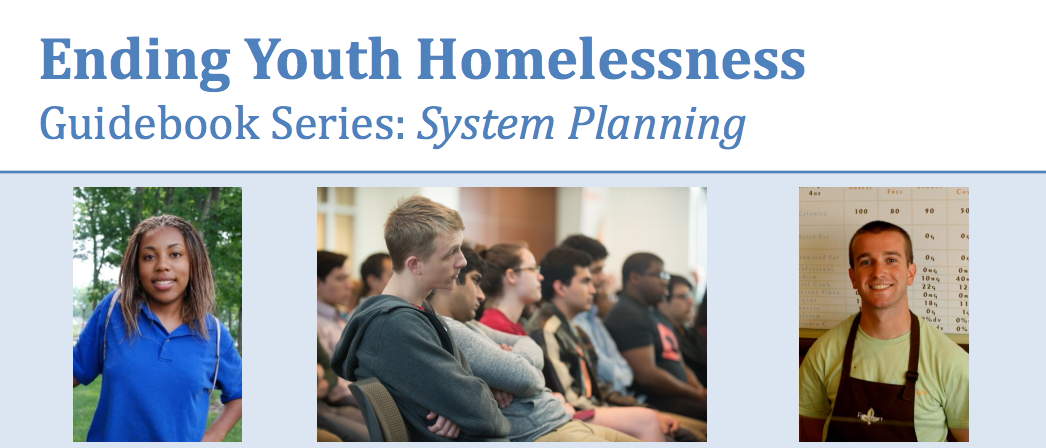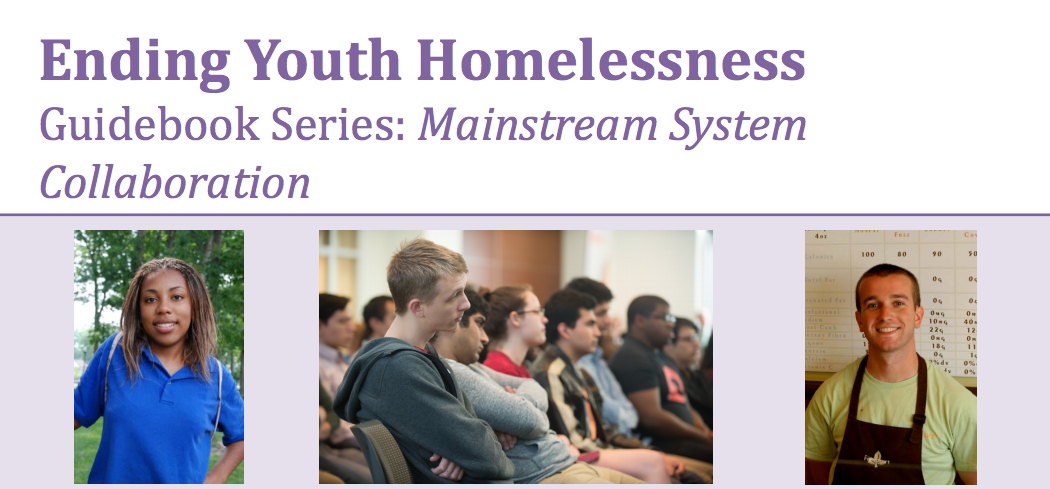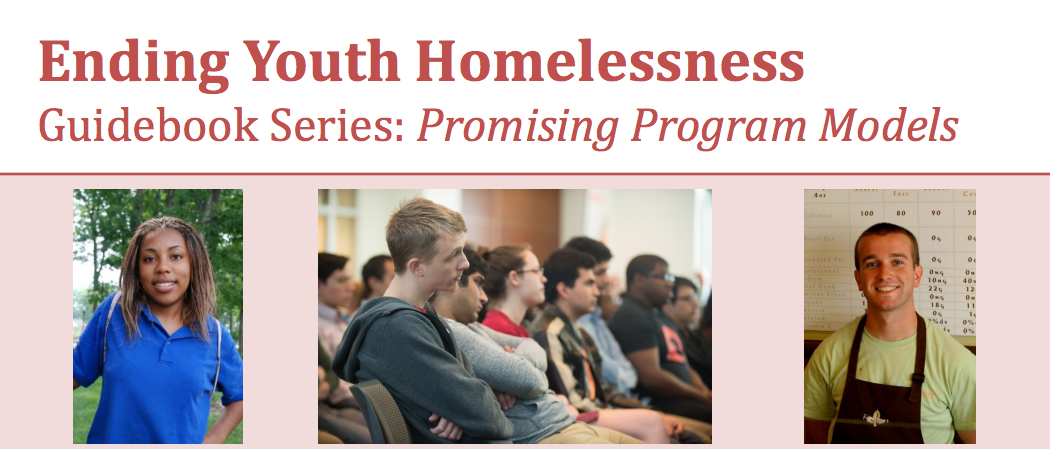This series of three guidebooks is designed for Continuum of Care (CoC) leadership and stakeholders to use as a direct, hands-on action plan in efforts to prevent and end youth homelessness, as they have been directed to ensure there is an effective and efficient system of care for all persons and households experiencing homelessness. The Guidebooks include suggested strategies, identification of promising practices, and considerations for CoCs and their partners that can be implemented immediately.
System Planning
The System Planning guidebook provides an overview of Federal Partners’ expectations and promising strategies for system planning to end youth homelessness. Ultimately, the system design will connect community partners and resources via an intentional strategy and the youth homelessness system will meet the core outcomes for youth as described in the United States Interagency Council on Homelessness (USICH) Federal Framework to End Youth Homelessness. This Guidebook focuses on engaging key community partners, establishing a decision-making and management structure, leveraging data across systems, and designing an organized youth housing and services array.
Mainstream System Collaboration
The Mainstream System Collaboration Guidebook reviews the various mainstream systems needed to partner with homelessness system stakeholders in order to design and implement an effective system to prevent and end youth homelessness: Child Welfare, Education, Workforce, Justice, Housing, Healthcare, Early Childhood Education, Community Organizations, and Mainstream Benefits. For each system, the guidebook reviews: how the system impacts and contributes to positive outcomes for youth; what resources are available within each system; who to connect with and engage; and examples of successful collaborative efforts from across the country.
Promising Program Models
The Promising Program Models Guidebook is designed to help CoCs, youth-serving organizations, and other stakeholders effectively serve the youth in their communities who are experiencing or at-risk of homelessness. This Guidebook describes key features of emerging program models to prevent and end youth homelessness; highlighting promising practices and possible funding sources to help communities plan, develop, and improve their own youth-appropriate services. With a well-coordinated and proportionate housing and service delivery system, communities can prevent and end youth homelessness.



